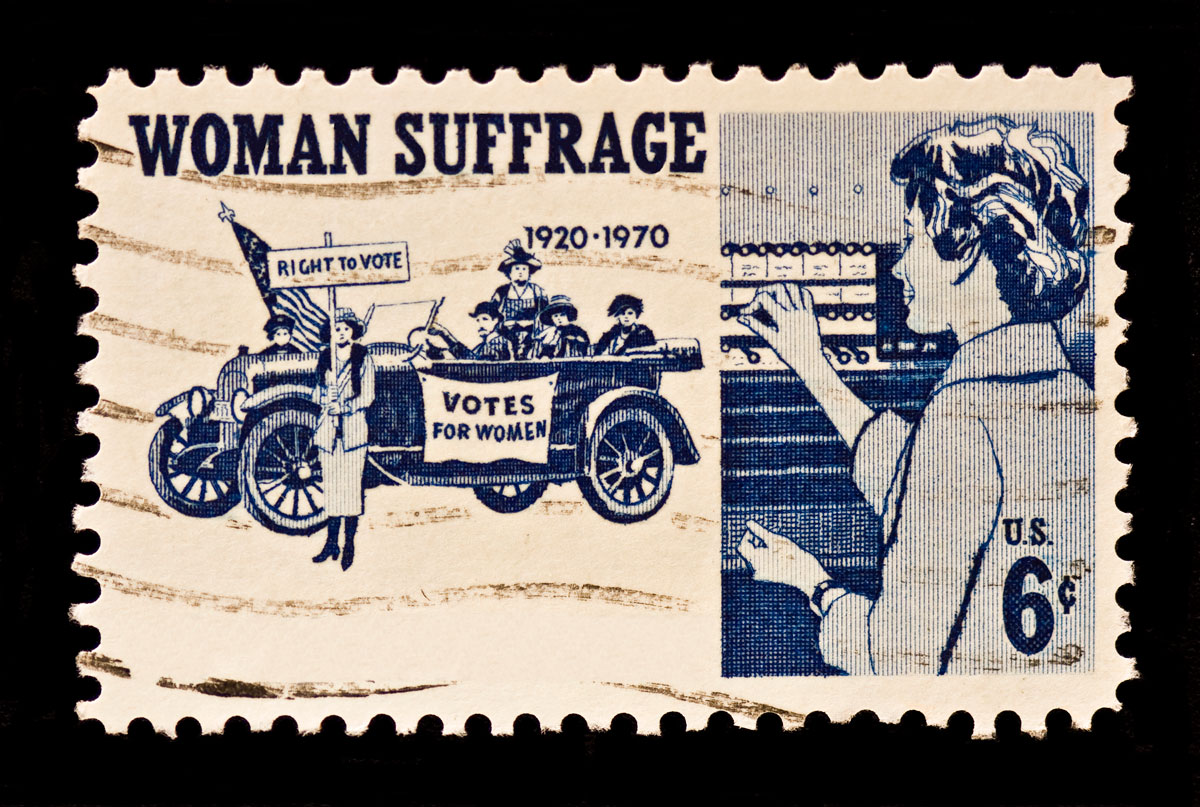To celebrate the hundredth anniversary of the ratification of the 19th Amendment giving women the right to vote, libraries and museums are showcasing the historical artifacts of the century-long movement. Looking at these collections, it’s easy to see how the stories we learned in school can leave out some of the most interesting bits of history. That is why historical collections, no matter how niche, are important to filling the gaps that history books leave out. In this way, a digital collection becomes more than a collection of papers or photographs; it becomes a narrative of history.
Library of Congress’s Suffragette Exhibit
In a year affected by COVID-19, online access to historical collections is more important than ever. Exhibitions that would usually be offered in person have moved partially or completely online to continue educating and inspiring those who can’t visit. The Library of Congress is one of the organizations turning to the internet to celebrate the women’s suffrage movement. In addition to in-person exhibitions, they’ve created an online exhibit for people to explore.
The “Shall Not Be Denied: Women Fight for the Vote” online exhibit does more than simply display digital versions of the items in their collection. The Library of Congress organized the exhibition to tell a story. Rather than just present the artifacts, it narrates the different eras of the suffrage movement. Visitors can explore the early, post-Civil War women’s movement; see the picket lines in front of the White House; and learn about the brave women of color who are rarely included in history books. Though often condensed, the women’s suffrage exhibit tells a larger story of a movement that survived and changed over decades.
Beyond the main exhibition, the Library also links out into more focused collections, such as Photographs from the Record of the National Woman’s Party and Women’s Suffrage in Sheet Music, to expand on their narrative. These collections are unique, and on their own don’t tell a story. But when combined with the main exhibition’s narrative, these smaller collections add humanity to the historical figures showcased. These were impressive and creative women who lived and fought for their rights.
Telling a Story with Your Collection
One of the most important parts of a collection is the story behind it. It could be the story of gathering the materials or the story behind the artifacts, but the larger narrative is what the audience connects with. Researchers or avid enthusiasts may be able to appreciate a collection with little more than the artifacts themselves, but if your goal is to share, inform, or educate people who are new to the subject or wanting to expand their knowledge, then building a narrative is essential.
Having a strong narrative to your collection not only leads the visitor to the most important or interesting artifacts, but it puts the collection into historical context. Even journals or detailed records need context in order to enrich the history they represent. Without context, the women of color highlighted by the Library of Congress’s More to the Movement section of their women’s suffrage exhibit are just pictures and names. It’s the context of their place in the story that explains how important the women were to the suffragette movement and why they were overlooked by history.
How Digitization Can Improve Your Collection’s Storytelling
An online collection has advantages over a physical collection, one being an improved opportunity for storytelling. When a person visits an exhibit in person, they can only see what is displayed at that time. In many cases this is only one part of a larger collection. Space, condition, and security can keep amazing artifacts from in-person viewing. People must also move through a gallery and could miss items meant to be experienced together.
By digitizing, the entire collection is at the visitor’s fingertips. No need to hide away the most interesting pieces in order to protect them from deterioration. Millions of people can see these rarely shown items whenever they want, and the inclusion of these artifacts will enhance the integrity of the larger story.
Instead of wandering a physical gallery, possibly missing items due to crowds or time limitations, an online collection has the advantage of linking items together. As visitors follow these artifacts through the story behind them, they can choose to leave the path and go down a side story through direct links to other artifacts or web pages. Once done, they can easily return to the main narrative without missing anything. Since a digitized collection is available 24/7 online, visitors can come and go when it’s convenient for them.
People don’t always remember names or dates of historical events, but a well-told story that brings those events to life is easy to recall. Artifacts and documents enhance that story. They give proof of what happened and voice to people long past. Your collection has a unique story to tell, if you let it.
Do you have pieces of history that you’d like to see displayed as a narrative that could impact the world? Anderson Archival can help. Give us a call at 314-259-1900 or an email at info@andersonarchival.com today!







